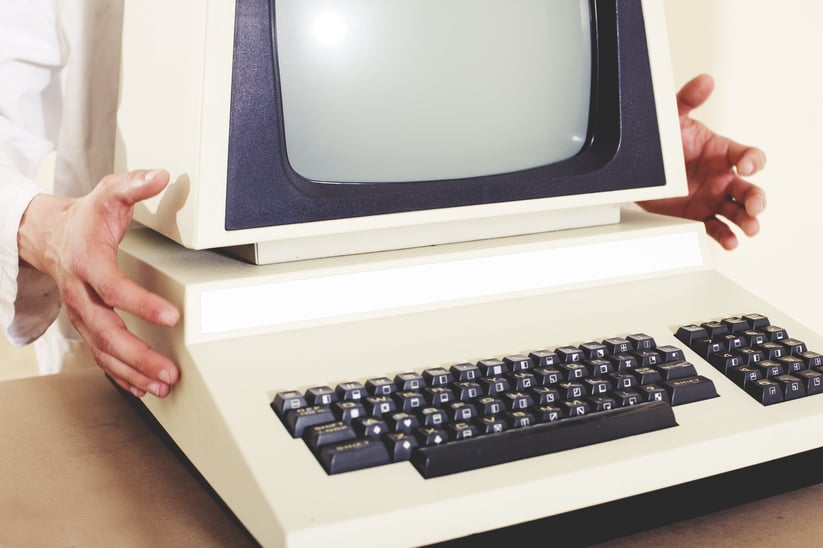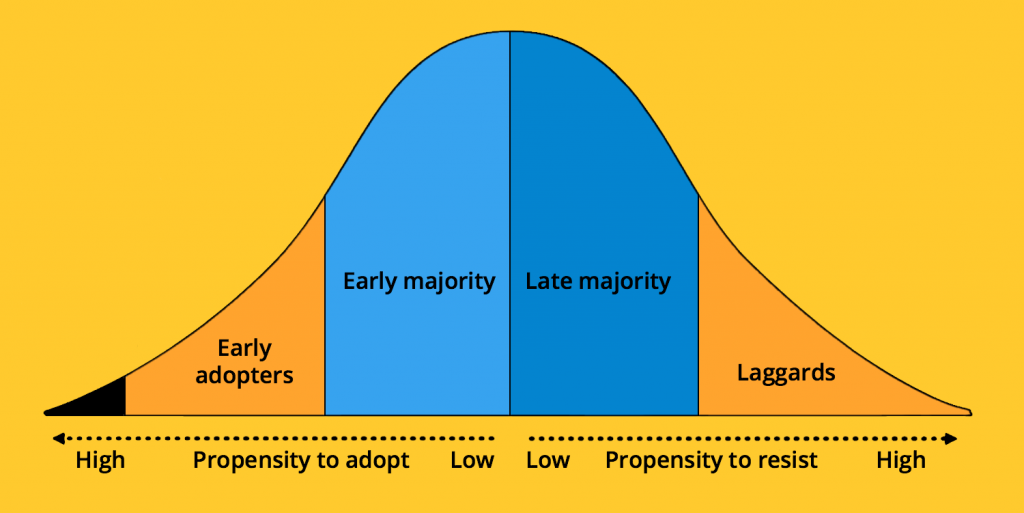Routines. They help us perform tasks better and faster, but they can also hinder development. With fixed practices, there is the risk that a sense of security is created that we want to hold onto, which can lead to us not reflecting on our working methods. When colleagues question or make suggestions about our methods, we may find it difficult to accept them because we do not want to risk security. Routines can, therefore, lead to missing opportunities for improvement.

Letting go of something comfortable makes room for development.
How new things become established and then outdated
It takes time for new ideas, paradigms, and changes to take hold. The scientific theory ”Diffusion of Innovation” (and its cousin, Gartner Hype Cycle), developed in the 1960s by Everett Rogers, is often considered a good model to describe how people adopt new things, make them part of their everyday life to then regard them as old and obsolete.
Diffusion of Innovation noted how agriculture was modernized in the last century, and the parallels to digitization are striking.
The most mentioned parallel is the so-called "gap" (The Chasm) between enthusiasts (early adopters) and more pragmatic users (early majority). This is where many ideas and companies have given up because their inventors have not had the patience to wait for a critical mass to change their behavior.

The diffusion of Innovation shows how 2.5% of the population make up the inventors, while the enthusiasts correspond to 12.5%. These two groups like new things and can oversee "growing pains". The rest of the population is more careful and wants to know that the product works, has a proven benefit, and that the cost is financially justifiable. This dynamic affects how we adopt not only new technologies and products but also new working methods.
Change demands acceptance patience
How do you introduce something new, for example, in a business with robust routines? It turns out time and time again that we humans need three things to really be able to implement change.
- A vision or a goal for what we want to achieve.
- Acceptance for the current state / starting state
- A strong belief, patience, and perseverance to achieve the goal.
Patience can often be the most important factor; change takes time, and it doesn't always work flawlessly initially. Accepting that you are not where you want to be and continuing to work towards your goal can be challenging.
Our platform helps you share knowledge so that employees feel secure in their tasks


